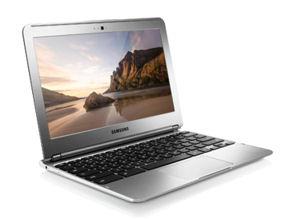 So you want OpenCL-benchmarks? Phoronix is a benchmark for OSX and Linux, created by Michael Larabel, Matthew Tippett (http://en.wikipedia.org/wiki/Phoronix_Test_Suite). On Ubuntu Phoronix version 2.8 is in the Ubuntu “app store” (Synaptic), but 3.0 has those nice OpenCL-tests. The tests are based on David Bucciarelli‘s OpenCL demos. Starting to use Phonornix 3.0 (beta 1) is done in 4 easy steps:
So you want OpenCL-benchmarks? Phoronix is a benchmark for OSX and Linux, created by Michael Larabel, Matthew Tippett (http://en.wikipedia.org/wiki/Phoronix_Test_Suite). On Ubuntu Phoronix version 2.8 is in the Ubuntu “app store” (Synaptic), but 3.0 has those nice OpenCL-tests. The tests are based on David Bucciarelli‘s OpenCL demos. Starting to use Phonornix 3.0 (beta 1) is done in 4 easy steps:
- Download the latest beta-version from http://www.phoronix-test-suite.com/?k=downloads
- Extract. Can be anywehre. I chose /opt/phoronix-test-suite
- Install. Just type ./phoronix-test-suite in a terminal
- Use.
WARNING: It is beta-software and the following might not work on your machine! If you have problems with this tutorial and want or found a fix, post a reply.


 About 5 months ago we started
About 5 months ago we started 
 The past year you might not have heard much from OpenCL-on-ARM, besides the Arndale developer-board. You have heard just a small portion of what has been going on.
The past year you might not have heard much from OpenCL-on-ARM, besides the Arndale developer-board. You have heard just a small portion of what has been going on.














 Does your computer have OpenCL-capable hardware? Read on and find out if your computer is compatible…
Does your computer have OpenCL-capable hardware? Read on and find out if your computer is compatible…


 There is a lot going on at the path to GPGPU 2.0 – the libraries on top of OpenCL and/or CUDA. Among many solutions we see for example Microsoft with C++ AMP on top of DirectCompute, NVidia (and more) with OpenACC, and now
There is a lot going on at the path to GPGPU 2.0 – the libraries on top of OpenCL and/or CUDA. Among many solutions we see for example Microsoft with C++ AMP on top of DirectCompute, NVidia (and more) with OpenACC, and now 





 UPDATED in February 2017
UPDATED in February 2017
 Altera has just released the free ebook FPGAs for dummies. One part of the book is devoted to OpenCL, so we’ll quote some extracts here from one of the chapters. The rest of the book is worth a read, so if you want to check the rest of the text, just
Altera has just released the free ebook FPGAs for dummies. One part of the book is devoted to OpenCL, so we’ll quote some extracts here from one of the chapters. The rest of the book is worth a read, so if you want to check the rest of the text, just 



 ZiiLabs has been offering an early access program for
ZiiLabs has been offering an early access program for  In the past years we have been translating several types of software to AMD, targeting OpenCL (and HSA). The main problem was that manual porting limits the size of the to-be-ported code-base.
In the past years we have been translating several types of software to AMD, targeting OpenCL (and HSA). The main problem was that manual porting limits the size of the to-be-ported code-base.